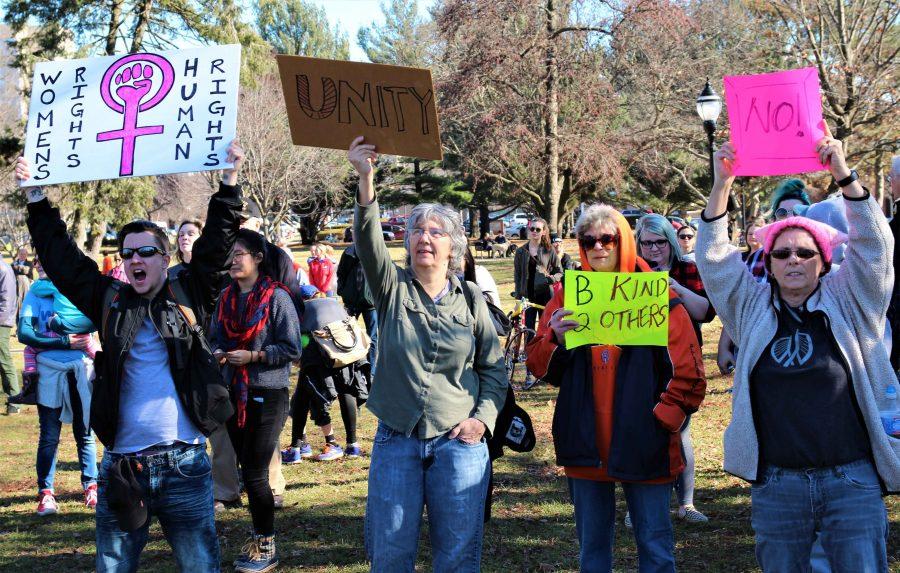Protests shouldn’t escalate into violence
Appriximately 5,000 local men and women gather at West Side Park before marching through downtown Champaign on Saturday, January 21, 2017.
Jan 24, 2017
 Last Friday, anti-Trump protesters became vandalists as they shattered the windows of Starbucks and Bank of America in Washington D.C., among other damages.
Last Friday, anti-Trump protesters became vandalists as they shattered the windows of Starbucks and Bank of America in Washington D.C., among other damages.
The peaceful demonstrations intensified into an explosion of anger as protesters began using bricks, poles and hammers on business property just an hour before Donald Trump’s inauguration in Washington D.C.
Just a day later, the Women’s March on Washington and its subsequent sister marches around the world demonstrated a more organized, effective approach against the current administration. Most importantly, it was peaceful.
There are two ways to protest, and Friday’s showing is definitely an example of what shouldn’t happen. Smashing the windows of businesses and properties that are not affiliated with Trump or his administration just makes whatever cause you’re supporting look much worse.
Get The Daily Illini in your inbox!
Think about it: What does vandalizing business property amount to in the long run? There wasn’t even a physical message that was left; just shattered windows and a distraught police force.
What’s ironic is that the CEO of Starbucks, Howard Schultz, endorsed Hillary Clinton back in September. To have one of their shops partially destroyed — despite a company’s public support of the movement’s preferred candidate — paints a picture of ignorance about the nation’s more liberal supporters.
Protests can and should remain peaceful. The message, whatever it may be, becomes much more impactful if there is no violence. The moment the police force has to intervene due to potential damage to businesses and civilians is the moment that the message begins to fall apart.
In a 2013 study to determine the effectiveness of both types of protests, political scientist Erica Chenoweth concluded that from 1900-2006, the collective failure rate of violent and nonviolent protests were 60 percent and 20 percent, respectively.
And while our nation’s short history suggests that only the violent protests seem to be the most memorable, that’s only because the ramifications made them that much more impactful — and not in a good way.
It’s difficult to argue that a substantial number of the protesters over these past several months aren’t younger individuals. Most of the controversial topics today revolve around women’s rights and gender and racial equality: something that they relate more strongly to than any other age group.
So it’s not surprising that the demographic that seems to be most affected by these topics are the millennials: college students, high school upperclassmen and recent graduates.
When we take these movements and ideals and organize them into something like the Women’s March on Washington, it’s perfectly acceptable. An exercise of our rights.
But for those arrested last Friday who claimed to be anarchists wearing masks and dressing in black? That’s where the line should be drawn. Even their arrests were fully deserved; at that point, it was no longer a protest, but a riot.
In this day and age, protests and demonstrations seem to be more frequent than ever.
This nation is in a state of very high tension amidst the growing political and social divide between its citizens; however, one shouldn’t forget that violence is never the answer — especially among our own people.
Tyler is a freshman in media.






